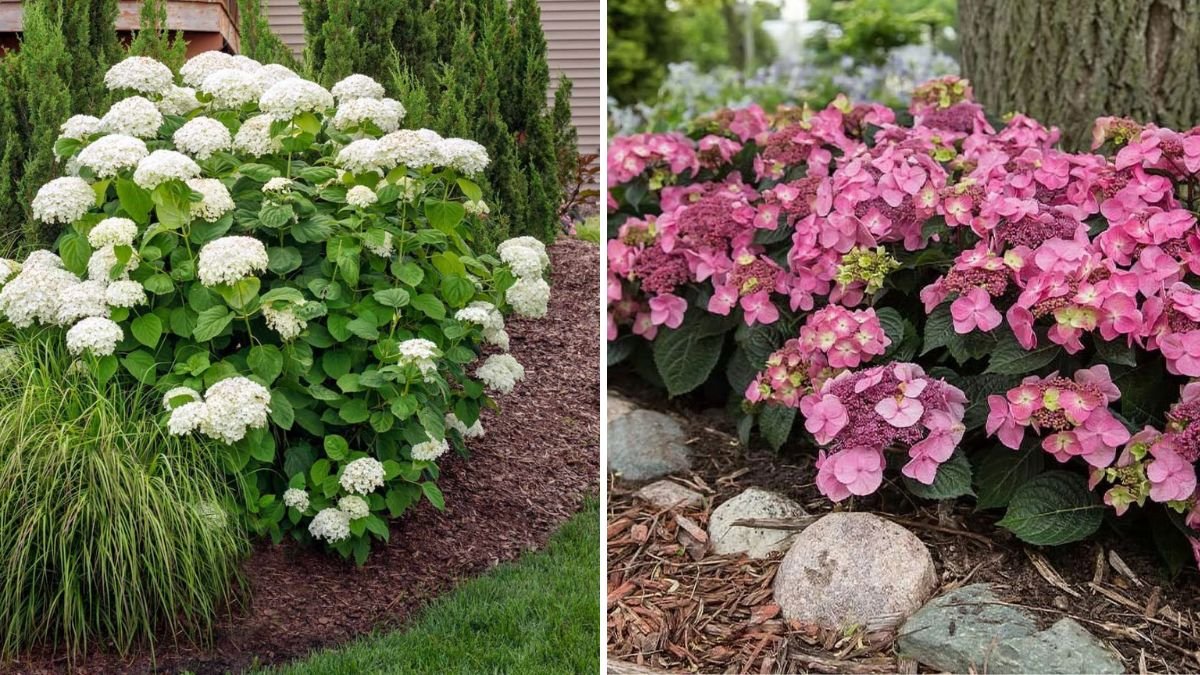Hydrangeas are beloved garden shrubs known for their lush foliage and stunning blooms that range from powdery blues to deep pinks. While they are often the star of the garden, the space beneath their wide, leafy canopies can feel underutilized. However, this shaded area offers a perfect opportunity to plant companion shade-loving species that not only survive under hydrangeas but enhance their beauty.
By carefully selecting shade-tolerant plants, gardeners can create a layered, vibrant garden display, improve soil health, and maintain a natural, balanced ecosystem. In this article, we’ll explore seven shade plants that thrive under hydrangeas, their benefits, and expert tips for successful planting.
Why Plant Under Hydrangeas?
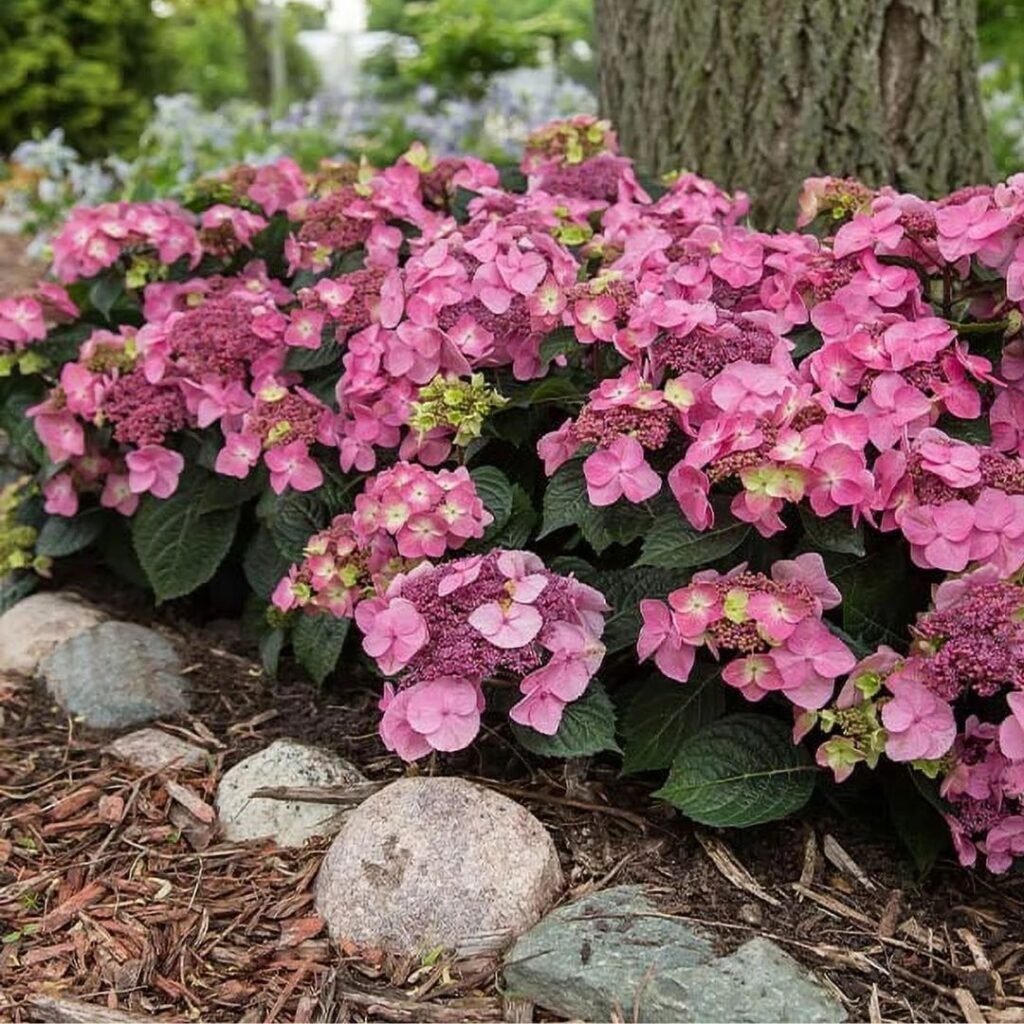
Planting under hydrangeas is more than just aesthetic; it provides multiple ecological and horticultural benefits:
- Maximizes garden space: Utilize areas that might otherwise remain bare or weedy.
- Protects soil moisture: Hydrangea shade helps retain moisture for shade-loving companions.
- Enhances visual interest: Layering plants creates texture, color, and depth.
- Supports biodiversity: Shade-loving plants attract pollinators and beneficial insects.
Selecting compatible shade plants ensures that the companions do not compete aggressively with hydrangea roots, which can be shallow but wide-spreading.
1. Hostas (Hosta spp.)
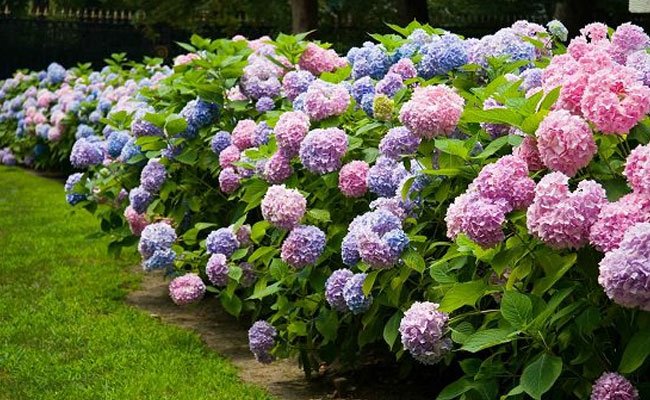
Hostas are a classic shade garden plant celebrated for their lush foliage and versatility.
Why They Thrive Under Hydrangeas:
- Tolerate partial to full shade, making them perfect under dense hydrangea canopies.
- Their large, textured leaves contrast beautifully with hydrangea foliage.
- Low-maintenance perennials that come back year after year.
Planting Tips:
- Space plants 12–24 inches apart to allow airflow and reduce fungal issues.
- Choose varieties with different leaf colors—green, blue, or variegated—to create visual interest.
- Apply mulch to retain moisture and protect roots.
Expert Insight: Hostas can act as a groundcover under hydrangeas, suppressing weeds while adding lush greenery.
2. Ferns (Various Genera: Dryopteris, Athyrium, Polystichum)
Ferns are graceful, textural plants that thrive in cool, shady conditions.
Why They Thrive Under Hydrangeas:
- Adapted to dappled or full shade, mirroring the conditions beneath hydrangeas.
- Delicate fronds contrast with broad hydrangea leaves, adding elegance.
- Provide year-round structure in perennial gardens.
Planting Tips:
- Choose species suited to your climate and soil moisture.
- Maintain consistently moist soil, but ensure good drainage to prevent root rot.
- Plant in clusters or drifts for a natural woodland look.
Expert Insight: Ferns add vertical texture beneath hydrangeas, complementing their rounded blooms while filling empty soil space.
3. Astilbes (Astilbe spp.)
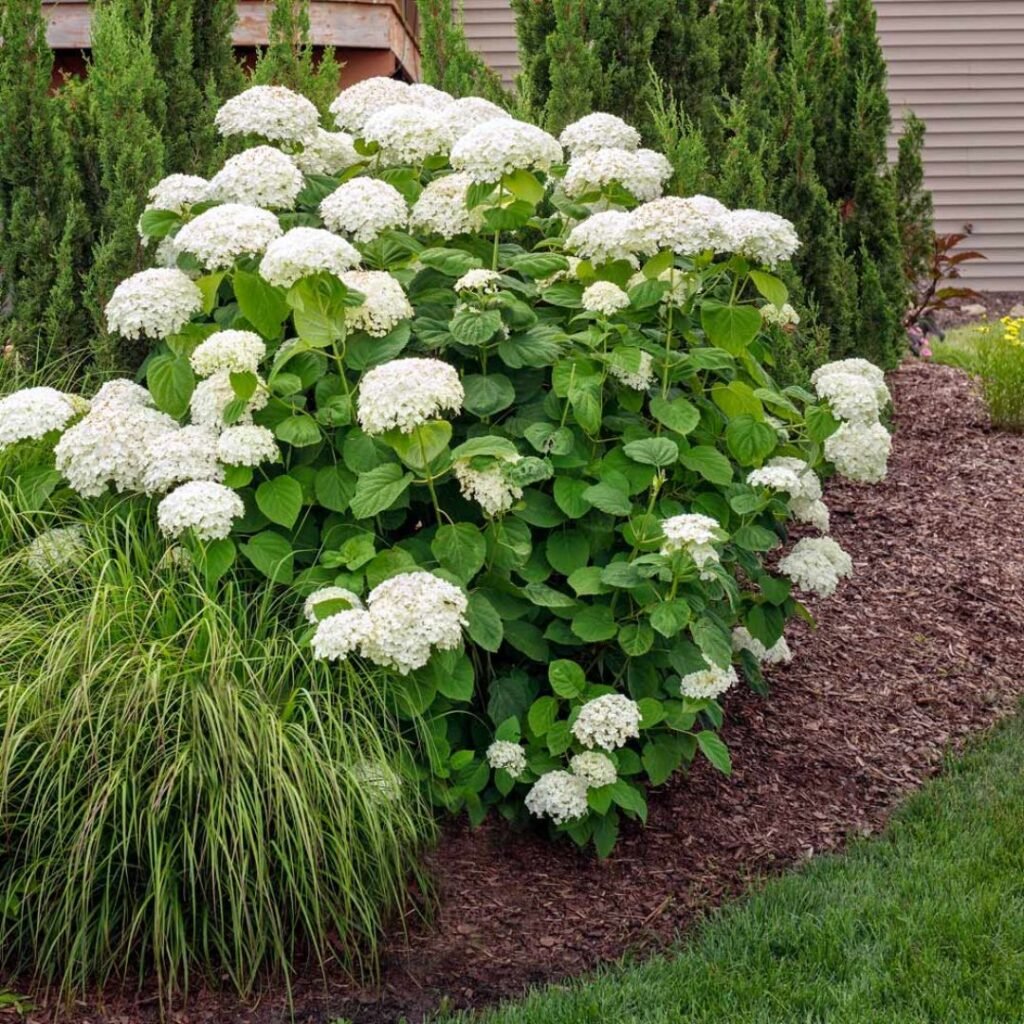
Astilbes are shade-loving perennials known for their plume-like flowers and ferny foliage.
Why They Thrive Under Hydrangeas:
- Flourish in partial to full shade with moist, well-drained soil.
- Bright, feathery flowers in pink, red, or white contrast with hydrangea blooms.
- Foliage remains attractive even when plants are not in bloom.
Planting Tips:
- Space 12–18 inches apart to allow airflow.
- Mulch around the base to maintain soil moisture.
- Pair with hydrangeas that have slightly larger leaves to create layered visual effects.
Expert Insight: Astilbes’ vertical flower plumes complement hydrangeas’ rounded blooms, enhancing garden depth and color.
4. Heuchera (Coral Bells)
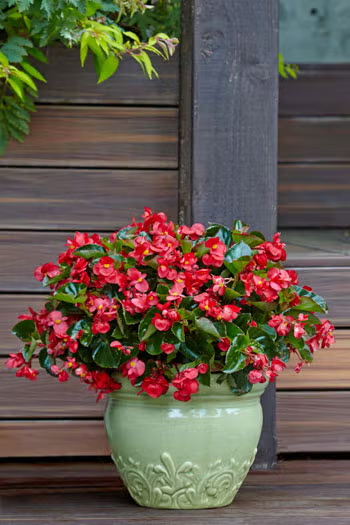
Heucheras are versatile perennials valued for their colorful foliage and delicate flowers.
Why They Thrive Under Hydrangeas:
- Shade-tolerant and low-growing, ideal for planting at the base of hydrangeas.
- Foliage comes in burgundy, purple, lime, or silver, providing a contrast to green hydrangea leaves.
- Small, airy flowers in summer attract pollinators.
Planting Tips:
- Space plants 12 inches apart for healthy growth.
- Choose varieties suited to your USDA zone and soil type.
- Avoid overwatering; hydrangea canopy helps retain moisture naturally.
Expert Insight: Heucheras brighten dark corners under hydrangeas and act as an ornamental groundcover that also supports pollinators.
5. Brunnera (Brunnera macrophylla)
Brunnera, also known as Siberian bugloss, is a shade-loving perennial with heart-shaped foliage and delicate blue flowers.
Why They Thrive Under Hydrangeas:
- Prefers partial to full shade and consistently moist soil.
- Silver-variegated leaves contrast beautifully with green hydrangea foliage.
- Spring blooms provide early-season interest before hydrangeas fully leaf out.
Planting Tips:
- Space plants 12–18 inches apart.
- Mulch to retain moisture and regulate soil temperature.
- Combine with other shade perennials for layered effects.
Expert Insight: Brunnera’s early blue flowers create a beautiful transition into the peak hydrangea season, enhancing seasonal continuity.
6. Tiarella (Foamflower)
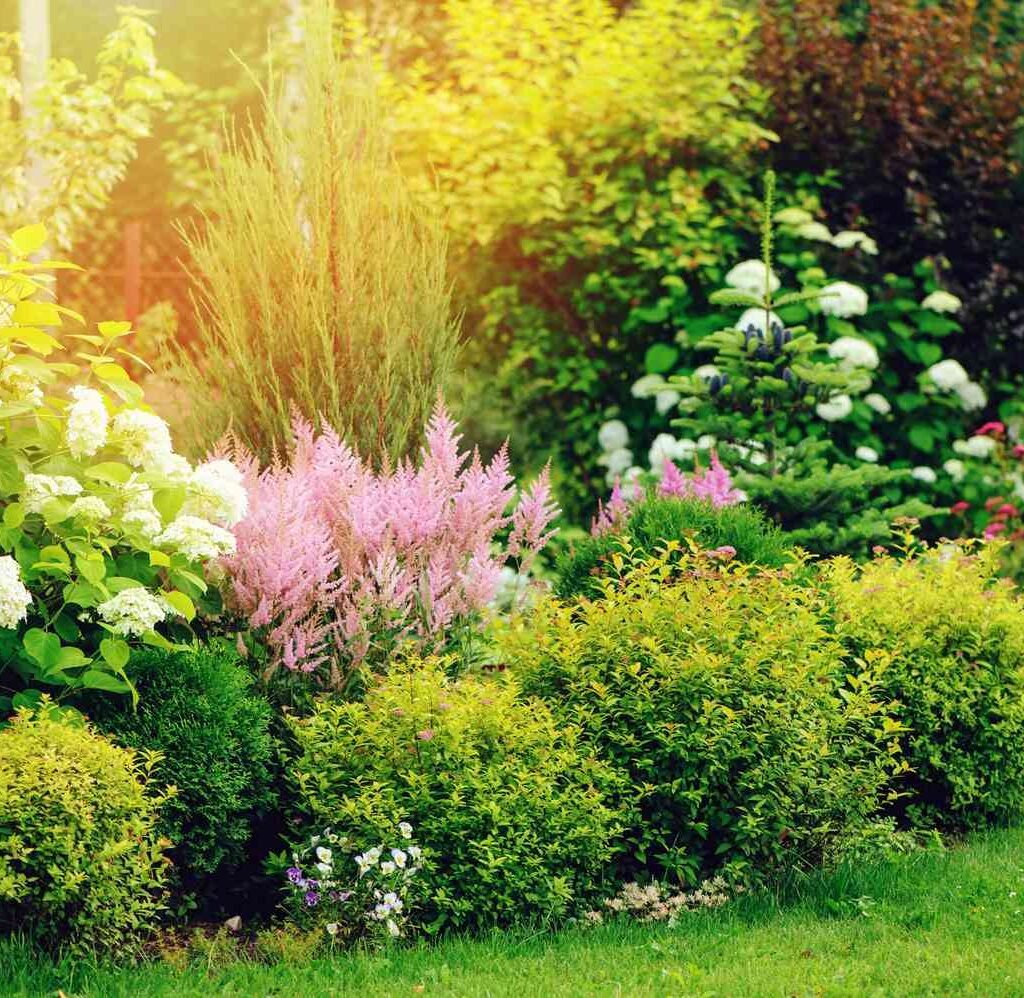
Tiarellas are low-growing shade plants with intricate leaves and airy flowers.
Why They Thrive Under Hydrangeas:
- Tolerant of full to partial shade and moist soil conditions.
- Attractive foliage in green, bronze, or variegated tones adds color contrast.
- Small, frothy flowers attract bees and pollinators.
Planting Tips:
- Plant in drifts or clusters for a natural woodland effect.
- Space 12 inches apart to prevent overcrowding.
- Pair with ferns or hostas for texture contrast.
Expert Insight: Tiarellas are excellent underplantings for hydrangeas, adding subtle color and supporting biodiversity.
7. Lamium (Dead Nettle)
Lamiums are low-growing, shade-tolerant groundcovers with silver-marked foliage and small flowers.
Why They Thrive Under Hydrangeas:
- Adaptable to partial to full shade, ideal for shaded hydrangea bases.
- Foliage patterns brighten dark garden areas.
- Small blooms attract pollinators and add seasonal interest.
Planting Tips:
- Use as a groundcover around hydrangea roots to suppress weeds.
- Space 6–12 inches apart for effective coverage.
- Combine with other shade plants like hostas and ferns for varied texture and color.
Expert Insight: Lamium provides long-lasting foliage interest under hydrangeas and protects soil from erosion.
Tips for Successful Planting Under Hydrangeas
- Assess Light Conditions: Hydrangeas create dappled or partial shade. Choose companions adapted to your specific light levels.
- Check Soil Moisture: Most shade plants under hydrangeas prefer consistently moist, well-drained soil.
- Avoid Root Competition: Plant companions carefully to minimize competition for water and nutrients.
- Layering Plants: Combine tall, medium, and low-growing species for depth, texture, and continuous color.
- Mulch: Apply organic mulch to retain soil moisture and protect shallow roots.
- Seasonal Interest: Mix spring-blooming and summer-blooming shade plants to complement hydrangea flowers.
Benefits of Shade Plants Under Hydrangeas
- Enhanced Visual Appeal: Contrasting foliage and flowers create dynamic, layered garden beds.
- Soil Protection: Groundcovers like lamium and hostas reduce erosion and retain moisture.
- Weed Suppression: Dense shade plantings limit weed growth under hydrangeas.
- Pollinator Support: Many shade plants attract bees, butterflies, and other beneficial insects.
- Biodiversity and Ecosystem Health: Shade companions support a balanced garden ecosystem.
Conclusion
Planting shade-loving companions under hydrangeas transforms underutilized garden spaces into thriving, vibrant areas. Hostas, ferns, astilbes, heucheras, brunnera, tiarellas, and lamium all thrive under hydrangea canopies, offering texture, color, and ecological benefits.
By layering shade-tolerant plants with hydrangeas, gardeners can create a lush, multi-dimensional garden that is both beautiful and beneficial for the ecosystem. These plantings maximize space, support pollinators, suppress weeds, and protect soil, all while highlighting the stunning hydrangea blooms.
With careful selection and planning, the space beneath your hydrangeas can become a lush, thriving understory, enhancing your garden’s overall appeal and ecological balance year-round.
